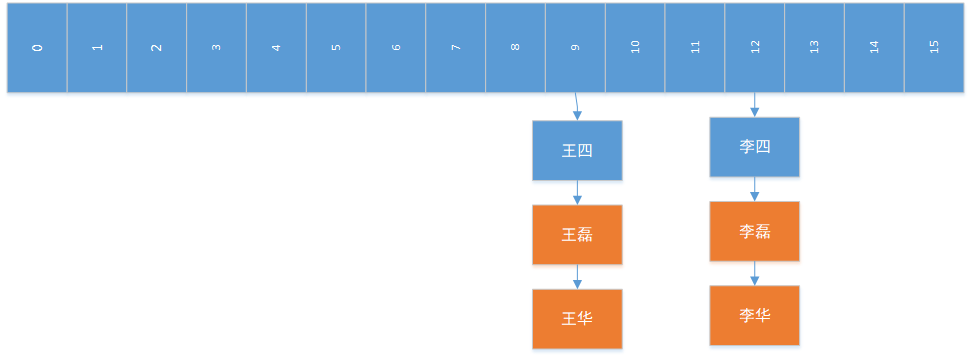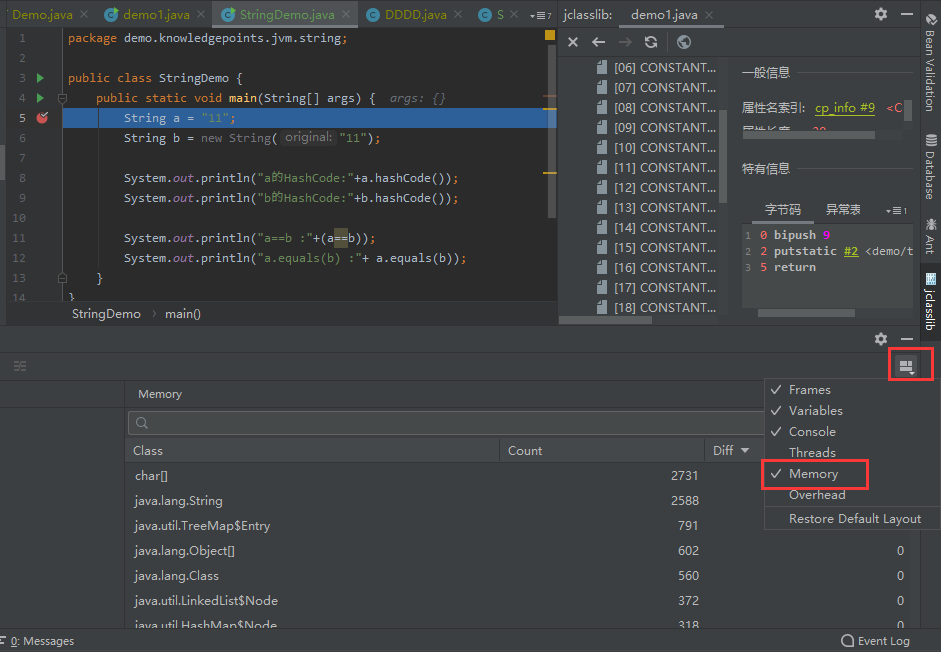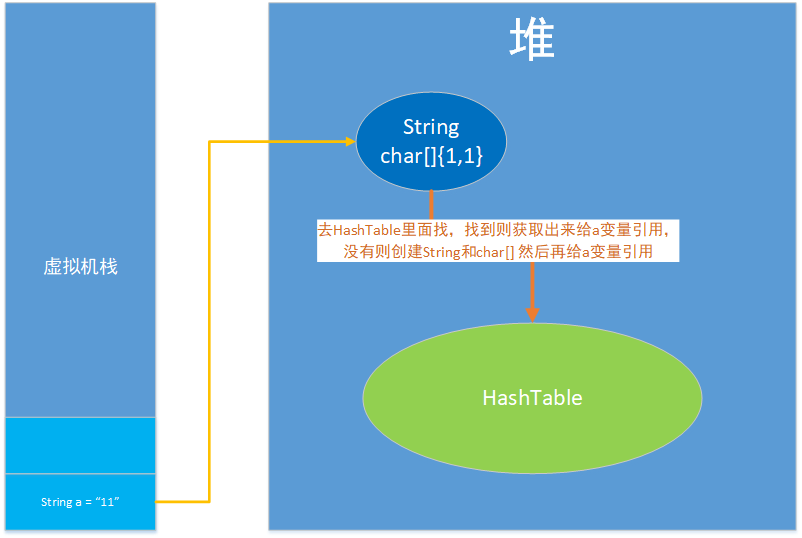前言
Java 字符串底层是如何存储的,如何提高性能的,今天就来好好了解一下。
字符串的存储结构
Jvm 有专门的字符串常量池用于存放字符串,存放字符串的数据结构是HashTable。
HashTable的数据结构如下:

看个案例:
public class StringDemo { public static void main(String[] args) { String a = "11"; String b = new String("11"); System.out.println("a的HashCode:"+a.hashCode()); System.out.println("b的HashCode:"+b.hashCode()); System.out.println("a==b :"+(a==b)); // 比较的指针地址 System.out.println("a.equals(b) :"+ a.equals(b)); // 比较的是hashCode } }
运行结果:

通过案例我们来详细说明一下,Jvm如何创建一个String字符串的。
String 字符串会创建多少个Oop(Oop 是指Java 对象在Jvm中的存在形式)?
String a = "11";
我们可以通过idea 来看创建了多少个Oop。

调式字符串赋值后。 char[] 和 String 都加一了。

说明创建了两个Oop
char[] 对应 TypeArrayKlass
String 对应 TypeArrayOopDesc
画图说明字符串在Jvm 中的存在形式:

String a = new String ("11"); -- 创建了3和Oop

再来看一下String 拼接的案例
public class StringDemo2 { public static void main(String[] args) { String s1 = "1"; String s2 = "2"; String s3 = s1+s2; String s4 = "12"; System.out.println("s3 == s4: "+(s3 == s4)); } }
运行结果:

拼接字符串的实现原理用一句话完美解释:
new StringBuilder(s1).append(s2).toString(); // toString 方法中有一个new String的逻辑。
并且拼接后的字符串是不放入常量池的。 看看toString 的源码
public String toString() { // Create a copy, don't share the array return new String(value, 0, count); }
new String(value, 0, count) ,这种方式创建的String 不放入常量池。
那有什么方式可以将拼接的字符串放入常量池吗?答案是肯定的。
public class StringDemo2 { public static void main(String[] args) { String s1 = "1"; String s2 = "2"; String s3 = s1+s2; s3.intern(); // 将拼接的字符串放入常量池 String s4 = "12"; System.out.println("s3 == s4: "+(s3 == s4)); } }
intern 方法就是将拼接的字符串放入常量池。
再来看一个案例:
public class StringDemo2 { public static void main(String[] args) { final String s1 = "1"; final String s2 = "2"; String s3 = s1+s2; String s4 = "12"; System.out.println("s3 == s4: "+(s3 == s4)); } }
运行结果:

原因是s1,s2 都是final修饰,表示不会变,那么String s3 = s1+s2; 其实也不会变,所以和 s3 = “12” 等价。
总结
String 字符串对应数据存放在字符串常量池。
拼接字符串实际就是StringBuilder 拼接。
final 修饰的情况。
intern 方法的作用是 将字符串加入常量池。